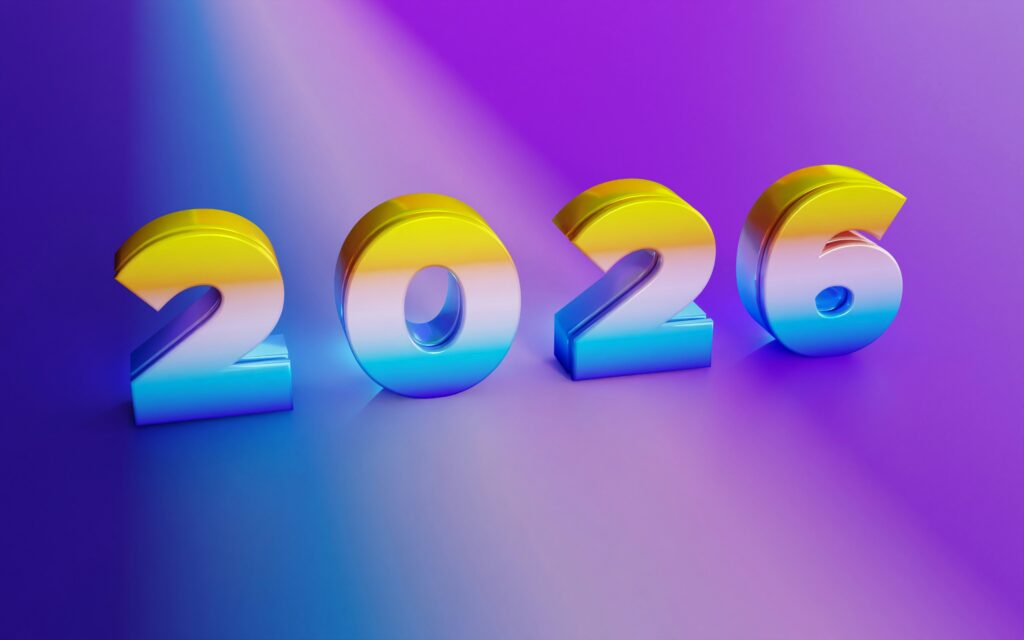Social media isn’t just another marketing channel—it’s where culture happens. In 2025, nearly 5.4 billion people worldwide, or about two-thirds of the global population, use social platforms. In the U.S. alone, that number is around 72.5% of the population. For brands, that makes social media one of the most powerful tools to connect with audiences, drive sales, and stay relevant.
But posting at random won’t cut it anymore. To win, your business needs a thoughtful social media strategy. Here’s how to approach it in 2026, starting with which platforms matter most.
Breaking Down the Major Platforms
With over 3 billion monthly active users, Facebook remains the largest social media platform worldwide. Its strength lies in community and reach: Groups, events, and paid ads continue to drive strong results, especially for local businesses and consumer brands targeting Gen X and Millennials. Think of Facebook as your digital town square: still busy, still valuable, even if younger audiences spend less time there.
Instagram attracts about 2 billion monthly users, and it continues to evolve into a hybrid of storytelling and shopping. Reels dominate the algorithm, while Instagram Shops let users buy without leaving the app. Stories give brands a place to share more candid, behind-the-scenes content, balancing polished feeds with authenticity. If your brand leans visual, lifestyle-driven, or influencer-friendly, Instagram should remain a core part of your strategy.
TikTok
TikTok now boasts 1.6 billion monthly active users, with engagement that’s unmatched: users spend an average of 55 minutes per day on the platform. What started as a Gen Z app has gone mainstream, with Millennials and even Gen X scrolling daily. It’s the leading engine for trends, music and product discovery, making TikTok Shops an increasingly lucrative channel. For brands willing to be creative, quick, and unpolished, TikTok is where growth can happen overnight.
YouTube
With around 2.7 billion users, YouTube is still the king of long-form video and the world’s second-largest search engine. Tutorials, product explainers, and brand storytelling thrive here. But YouTube isn’t just about long videos anymore: Shorts have become a serious competitor to TikTok, giving brands another chance to reach audiences in bite-sized ways. If your brand can commit to consistent video, YouTube is a long-term play worth investing in.
Now with 1 billion members, LinkedIn has shifted from a résumé platform to a content hub. Executives, thought leaders, and brands alike use it to publish articles, share insights, and drive conversations. For B2B companies or brands looking to build authority, LinkedIn is the go-to platform. It’s also a recruitment tool, making it a double win for companies that want to attract both customers and talent.
X (formerly Twitter)
X has a smaller user base than Facebook or Instagram, but it remains essential for real-time conversation. Brands that perform well here don’t just post—they interact, respond, and contribute to the dialogue. X is particularly strong for industries tied to news, sports, culture, or entertainment. If your brand has a strong voice and a clear perspective, X can still be a place to stand out.
Threads
Meta’s text-based platform hit 400 million monthly users in 2025, proving it’s more than just a fad. Threads thrives on quick takes, conversational updates, and community-driven dialogue. It’s especially effective for brands leaning into thought leadership or aiming to engage in cultural conversations without the noise of older platforms.
BeReal
While smaller, with about 21 million monthly users, BeReal helped usher in a new demand for authenticity across platforms. For brands, it’s a reminder that audiences don’t just want polished campaigns—they want candid, human connection. Even if you don’t actively use BeReal, the ethos it created should shape your strategy everywhere else.
What is a Social Media Strategy?
So what does “strategy” mean in 2026? It’s more than just having an account and posting occasionally. A strategy is your roadmap: which platforms you’ll prioritize, what kind of voice and content you’ll use, how often you’ll post, and what goals you’re aiming for.
The best strategies today balance automation with authenticity. AI tools can help you draft captions, schedule posts, and analyze performance. But audiences can spot canned content instantly — human creativity and genuine engagement are what set brands apart.
A true strategy is a roadmap for how your brand shows up online—and it covers several key elements:
-
Platform prioritization: You don’t need to be everywhere. A strong strategy identifies the 2–3 platforms where your audience is most active and focuses your energy there.
-
Content pillars: These are the themes you’ll post about consistently—whether it’s education, behind-the-scenes culture, product highlights, or thought leadership. Content pillars give your feed structure and keep messaging on-brand.
-
Voice and tone: Define how your brand sounds. Are you witty and playful? Polished and authoritative? Approachable and empathetic? Consistency in voice builds recognition and trust.
-
Format mix: Video, stories, carousels, live sessions, different platforms reward different content. A strategy outlines which formats you’ll lean on to maximize reach and engagement.
-
Posting cadence: Instead of guessing, a strategy maps out how often you’ll post on each platform. In 2026, algorithms reward consistency, but quality always trumps sheer volume.
-
Engagement plan: Social is a two-way street. Your strategy should detail how you’ll respond to comments, join conversations, and spotlight user-generated content to build community.
-
Measurement and goals: Finally, a strategy sets benchmarks for success—whether that’s follower growth, website clicks, conversions, or deeper engagement metrics like saves and shares.
The Benefits of a Defined Social Media Strategy
A strong social media strategy pays off in several key ways. First, it builds consistency, which in turn builds trust. When your audience sees the same voice, tone, and values across platforms, they know your brand is reliable and authentic.
Second, it creates efficiency. Instead of starting from scratch every time, your team has guidelines to follow, making campaigns smoother and more cohesive.
Third, it fuels growth. Social media drives measurable traffic and revenue—studies show social-first brands grow about 10% faster than those that treat it as an afterthought. On top of that, 58% of consumers discover businesses via social platforms and customers who engage with brands online spend significantly more.
Finally, it strengthens loyalty. Engagement goes beyond likes—comments, shares, and conversations help customers feel connected. Those interactions compound over time, turning casual followers into long-term advocates.
Work With Us
In 2026, social media is crowded, fast-moving, and sometimes overwhelming—but it’s also the best place to build a brand. The platforms you choose and the way you show up can make the difference between being scrolled past or remembered.
The key is clarity: know your audience, pick the right platforms, and stay consistent. Social media isn’t just marketing anymore—it’s the front door to your brand. Let’s chat today to help you build your approach with LaRue.Contact



